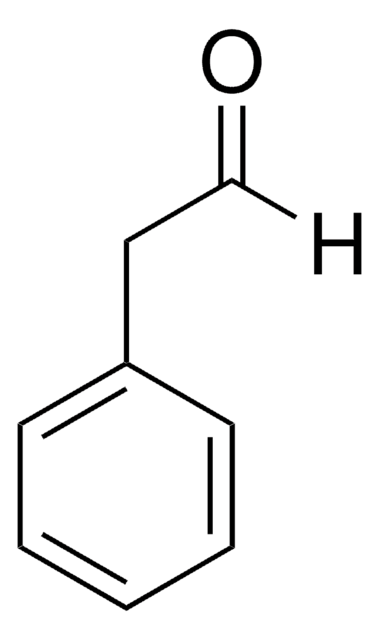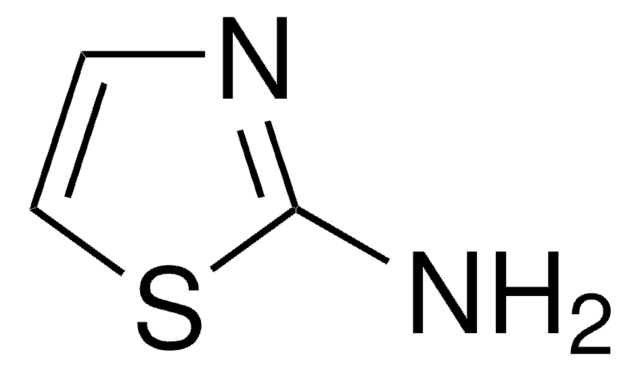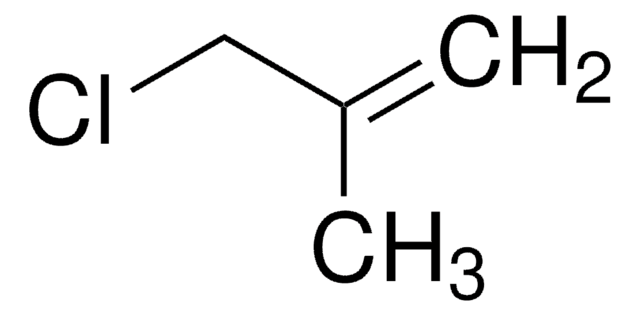推薦產品
生物源
synthetic
品質等級
等級
FG
Halal
Kosher
agency
meets purity specifications of JECFA
法律遵循
EU Regulation 1334/2008 & 178/2002
FCC
FDA 21 CFR 172.515
化驗
≥95%
折射率
n20/D 1.517 (lit.)
bp
92-94 °C/12 mmHg (lit.)
密度
1.002 g/mL at 25 °C (lit.)
應用
flavors and fragrances
文件
see Safety & Documentation for available documents
食物過敏原
no known allergens
感官的
fresh; green; floral
儲存溫度
2-8°C
SMILES 字串
[H]C(=O)C(C)c1ccccc1
InChI
1S/C9H10O/c1-8(7-10)9-5-3-2-4-6-9/h2-8H,1H3
InChI 密鑰
IQVAERDLDAZARL-UHFFFAOYSA-N
尋找類似的產品? 前往 產品比較指南
一般說明
2-Phenylpropionaldehyde is used in perfumes for its green hyacinth odor.
應用
- Cytotoxicity, early safety screening, and antimicrobial potential of minor oxime constituents of essential oils and aromatic extracts.: Explores the safety and effectiveness of 2-Phenylpropionaldehyde among other compounds in essential oils, highlighting its potential antimicrobial properties and implications for food safety and preservation (Strub DJ et al., 2022).
- Spectroscopic Evidence for a Cobalt-Bound Peroxyhemiacetal Intermediate.: This study provides spectroscopic evidence of a cobalt-bound intermediate in reactions involving 2-Phenylpropionaldehyde, advancing our knowledge of chemical reaction mechanisms and catalysis (Cho J et al., 2021).
儲存類別代碼
10 - Combustible liquids
水污染物質分類(WGK)
WGK 1
閃點(°F)
174.2 °F
閃點(°C)
79 °C
個人防護裝備
Eyeshields, Gloves, type ABEK (EN14387) respirator filter
tert-Butyldimethylsilylated cyclodextrins: versatile chiral stationary phases in capillary gas chromatography.
Maas B, et al.
Journal of Chromatographic Science, 33(5), 223-228 (1995)
M Popović et al.
Chemical research in toxicology, 17(12), 1568-1576 (2004-12-21)
Felbamate (2-phenyl-1,3-propanediol dicarbamate, FBM) can cause aplastic anemia and hepatotoxicity. The mechanism of FBM-induced toxicities is unknown; however, it has been proposed that 2-phenylpropenal, a reactive metabolite of FBM, is responsible. The pathway leading to this metabolite involves hydrolysis of
C M Dieckhaus et al.
Chemical research in toxicology, 14(5), 511-516 (2001-05-23)
Felbamate has proven to be an effective therapy for treating refractory epilepsy. However, felbamate therapy has been limited due to the associated reports of hepatotoxicity and aplastic anemia. Previous research from our laboratory has proposed 2-phenylpropenal as the reactive metabolite
Shane G Roller et al.
Chemical research in toxicology, 15(6), 815-824 (2002-06-18)
Felbamate is an anti-epileptic drug associated with hepatotoxicity and aplastic anemia. These toxicities are believed to be mediated by the formation of the reactive species 2-phenylpropenal. 4-Hydroxy-5-phenyl-[1,3]oxazinan-2-one is a metabolic precursor for 2-phenylpropenal. 4-Hydroxy-5-phenyl-[1,3]oxazinan-2-one exists in equilibrium with 3-oxo-2-phenylpropyl carbamate
Robert J Parker et al.
Chemical research in toxicology, 18(12), 1842-1848 (2005-12-20)
Evidence has been presented suggesting that a reactive metabolite, 2-phenylpropenal (ATPAL), may be responsible for the toxicities observed during therapy with the antiepileptic drug felbamate (FBM). Formation of ATPAL from its unstable immediate precursor, 3-carbamoyl-2-phenylpropionaldedhyde (CBMA) requires the loss of
我們的科學家團隊在所有研究領域都有豐富的經驗,包括生命科學、材料科學、化學合成、色譜、分析等.
聯絡技術服務







